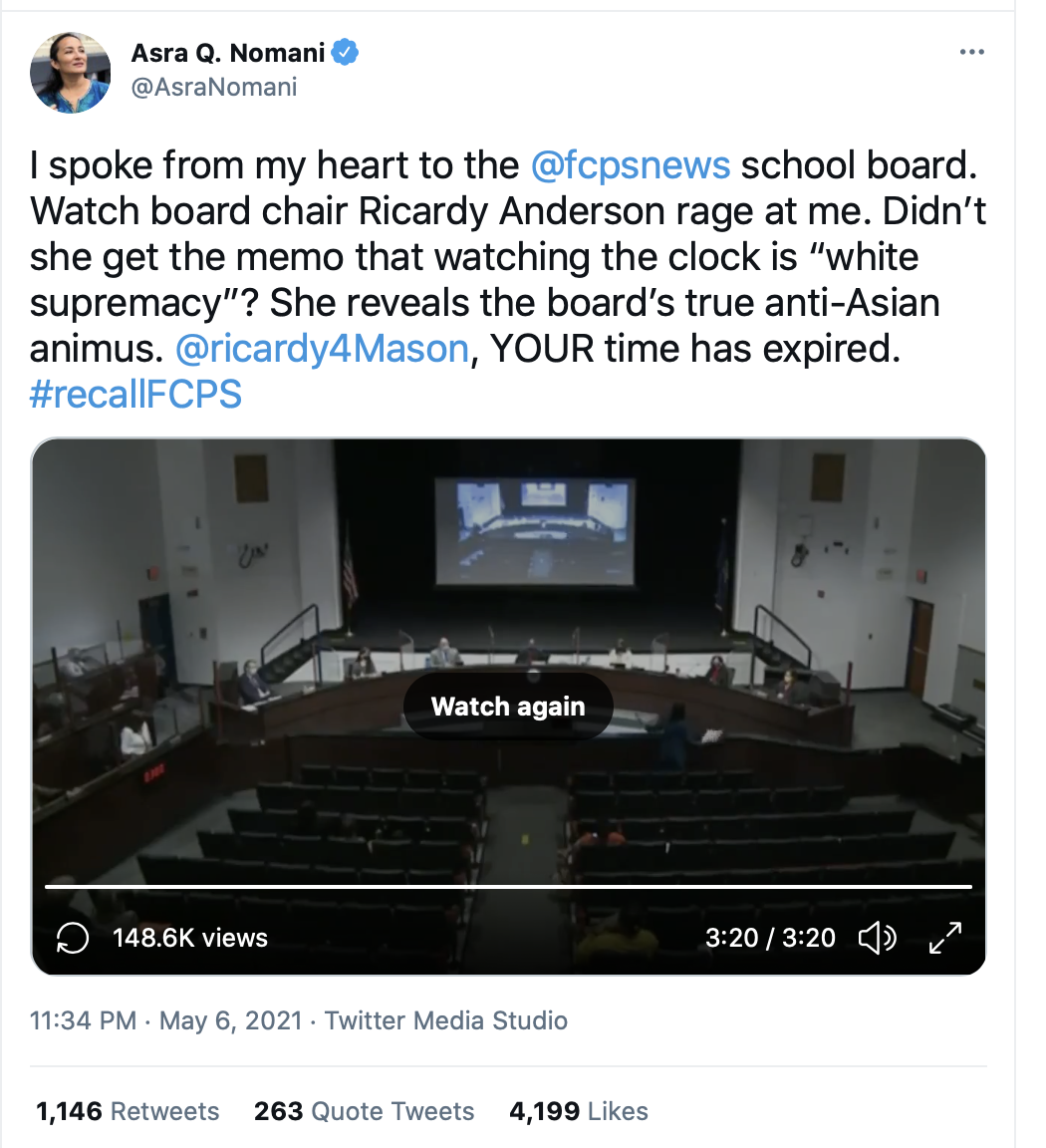Asra Q. Nomani, who identifies herself as a first generation immigrant, an Asian-American woman, delivers three minutes of grievances to the school board at Thomas Jefferson High School for Science and Technology. This school has carried the distinction of being the highest ranking public high school in the U.S. She delivers three intense minutes (and not a second more) describing how Critical Race Theory is uprooting the TJ’s incredibly successful approach to education.
John McWhorter’s comment: “Everybody should listen to her. A model for the only way we can get past what The Elect are doing to education nationwide.” McWhorter’s new book on “The Elect” can be found at his substack website.



This is the most sensitive topic for fans of CRT because the primary source of anti-Asian violence in the US is black Americans. I don’t know why, and don’t want to speculate. This is the only case of racial bias that actually has a basis in post-Reconstruction legislation.
“This is the only case of racial bias that actually has a basis in post-Reconstruction legislation.”
I don’t know anything about this. Could you please explain a bit more? Do you mean Reconstruction as in post-Civil War Reconstruction? And do you mean “post-Reconstruction legislation” as in the laws that were made to walk back Reconstruction? And if so, how does that relate to anti-Asian violence now? Thanks.
I don’t know for sure, but I assume that the comment is based upon the terrible way that Asian Americans have been treated by the United States. The Chinese were treated abysmally, a fact that changed somewhat during WWII when Chinese people were increasingly recognized as the enemy of our enemy (Japan), thus our “friends.” Iris Chang documents this mistreatment in her excellent book, The Chinese in America (2003).
Thanks for your response.
From Quillette article, “The Push for Equity in Education Hurts Vulnerable Children the Most.” It dramatically lowers your odds of being admitted to Harvard if you are Asian.
Even when admissions tests remain in place, institutions often apply different admissions standards across racial groups in order to improve the diversity of the student body. A prominent example of this can be found in the lawsuit alleging anti-Asian discrimination in Harvard admissions. According to the plaintiff’s expert analysis of Harvard admissions data conducted by economist Peter S. Arcidiacono, an Asian student with a 25 percent chance of admission to Harvard would have their chances of admission increase to 36 percent if they were white and had the same academic qualifications. Hispanic students with the same academic qualifications have a 75 percent probability of admission. An equivalent black student would have a 95 percent chance of admission.
In other words, what is an iffy one-in-four chance of admission for an Asian student is almost a sure bet for a black student with the same admissions qualifications. Among admitted black students, 45 percent had academic qualifications in the bottom half of all applicants, while only eight percent of admitted Asian students had similar academic qualifications. The admission rate for a student with academic qualifications in the top 10 percent of all applicants is 4.25 times higher for black applicants, 2.61 times higher for Hispanic applicants, and 1.37 times higher for white applicants than for Asian applicants.